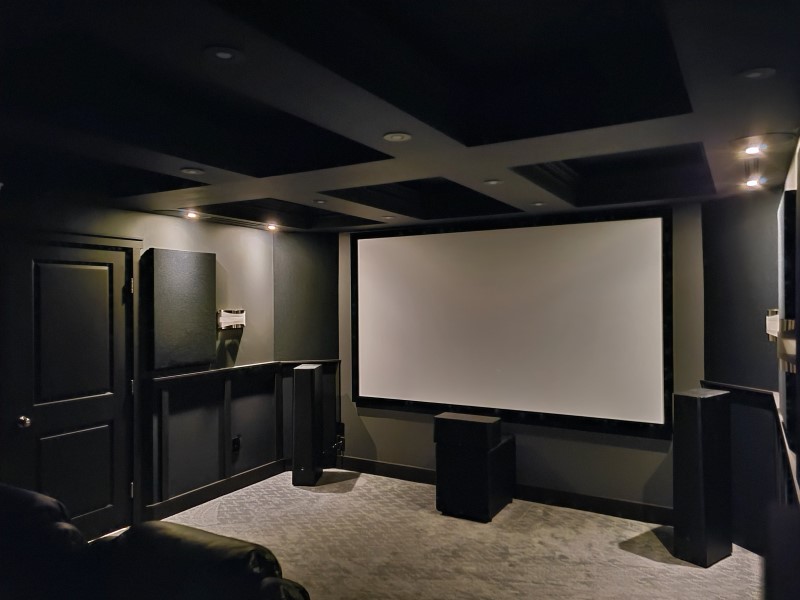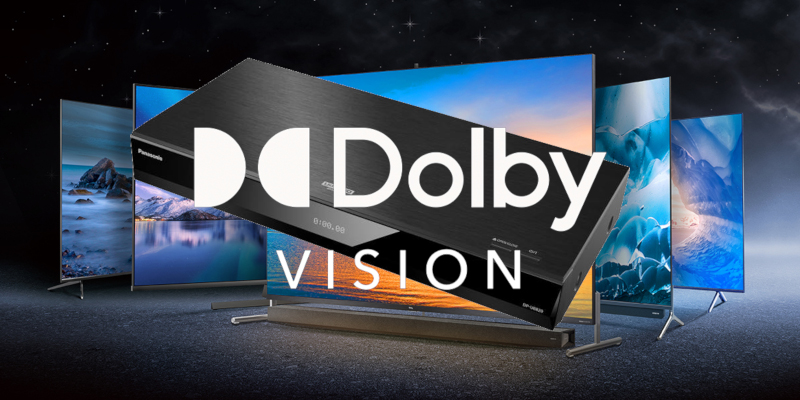Displays: All the Questions You Were Afraid to Ask! Part 1
Buying a new TV can be fun and exciting. It also can be an overwhelming experience. But here is the good thing, most people have many of the same questions as you. So you are not alone in your frustration and trepidation about pulling the trigger on your new TV. I’ve decided to compile some of the most frequent questions we get to help you buy the best set for your hard-earned money. So please sit down and relax, and let’s go over All the Questions You Were Afraid to Ask about displays!
1) Do I Want a Projector or a Big TV?
I struggled with this when I first designed my home theater. I wanted to have a cinematic experience, but I didn’t have the wall space, or budget, for a good projector. And five years ago, a large (75″) LED was prohibitively expensive, and OLED? Forget it.


But until recently, the only way to get a big screen for a “reasonable” price was through a projector. But today, as I stated above, you can get an 85″ LED with excellent performance for about $3000. Then, with the introduction of micro-LED, I expect to see even larger LED screens available.
I can’t get the performance I want for movies, TV shows, sports, and gaming with a projector. So I chose the best panel my budget allowed and moved my seats closer. Depending on the size of your room and your viewing distance, you may find that the projector is the best way to get the size you want.
2) Do I Want a Curved TV?
A few years ago, curved TVs were all the rage. People were afraid to ask too many questions about this odd display shape. Mostly because the marketing was so aggressive. They claimed that a curved display would put you in the middle of the action and immerse you in the picture. And they did…if you cared about one seat and one seat only. Yours!
Curved TVs were a great concept but objectively terrible. They have worse viewing angles, so they are not ideal if you want to have friends over for movies. Plus, curved TVs don’t handle reflections as well as flat TVs. Lastly, you have to sit pretty close to the screen to get the immersive effect.
However, I love curved computer monitors! Which is where I think they excel. You are close to the screen and are the only one (typically) viewing it. But as a TV? That’s a hard pass for me.
3) Do I Want Edge-Lit or Full-Array Local Dimming?
Ok, I will not waste a ton of time on this. Edge-lit panels use lights around the edges of the panel to backlight the screen. The TV can dim the backlight, but it dims only a few zones, usually under 30. This lack of zones means you don’t have a great deal of dynamic contrast. Edge-lit displays are popular because they are generally less expensive, and they can be made very, very flat. So if you care more about looks than performance, edge-lit displays are for you. But if you have gone on a display-focused forum, I can understand why this was a question you were afraid to ask!

Full-array local dimming (FALD) has lights behind the screen that can dim individually to create some incredible detail. For example, some TVs have a few hundred local dimming zones, while more expensive sets can have over 1000! As you can imagine, all of these different zones create a much more dynamic range and is far superior to edge-lighting. The displays are more expensive, however, and thicker. But, if you want the best in contrast and dimming, you might want to consider…
For more information, check out our article on How to Shop for the Best Flat-Panel Display.
4) Do I Want OLED or LED?
So objectively, OLED is superior to FALD LED TVs because the OLED can turn off individual pixels rather than a single dimming zone. This ability to turn off pixels means that a dark scene is a pure black because no light is going to the pixel. So watch any scene that features stars on a black background, and the abilities of OLED shine through.
All that said, OLED is not for everyone. First off, there is cost. For example, the smallest OLED screen I could find (48″) is about $1200, with large format OLEDs (83″) costing upwards of $6000 (prices change daily, so your results may vary)! Compare that to LED, and you will see a significant price delta between the two. A “good” LED starting under $1000, and large format TVs (85″) topping out at $3000 for flagship models are what I could find.
Secondly, with OLED, there is a chance of screen burn-in. Because there is an organic compound in the pixel layers, static logos or images can permanently burn onto the screen. As a result, they will be visible as ghost images while other content plays.

This means that gamers are at increased risk of burn-in because of static HUDs or other in-game types of graphics. Same for users who watch programs with static logos on-screen (think 24-hour news stations). There are built-in features on OLED TVs that significantly minimize the risk of burn-in, so I don’t think it is as much of a risk as before.
Lastly, the other considerations are judder and bloom. Judder is more prevalent with OLED because of its instantaneous response time. Fast-moving images can be choppy, but you can attenuate that by applying some motion smoothing (if you wish). Alternatively, bloom is an issue with LED TVs. An artifact occurs when an isolated bright object bleeds into darker areas surrounding it and creates a halo effect. It is most prevalent in space scenes or around subtitles. So, while OLED is considered better overall than LED TVs, they are not without their issues.
5) What’s the Deal with HDR Vs. Dolby Vision?
Again, if you start to go down the HDR rabbit hole, you can quickly get overwhelmed with the debate on the best format. But who is right? What if I said it doesn’t matter a lot what type of HDR you have? Well, some purists think that Dolby Vision is THE only way to go. I don’t blame you if this was a question you were afraid to ask about displays.

I believe that the performance of your new TV is more important than the format you have. Instead, focus on panels with good peak brightness and full-array local dimming (FALD). This combination will create a more dynamic contrast and help pull out those small details that a poor-performing panel loses.
And here is what you need to know. You probably won’t be able to notice a difference between a Dolby Vision and HDR movie or TV show unless you are measuring it with fancy equipment or are looking closely at the screen for differences. I have watched several movies in both formats, and with my OLED, I can’t tell the difference between the two formats.
Our Take
In this part, we discussed some of the basic questions about features you were afraid to ask about displays. And we understand why, it can be daunting to ask them. Forums are generally filled with personal opinions and fanboys (and girls) that suggest the same TVs regardless of objective performance and budgets. Here, we are trying to give you the basic info so that you can make an informed decision.
In Part II, we will deal with connections, apps, and more. Stay tuned!


